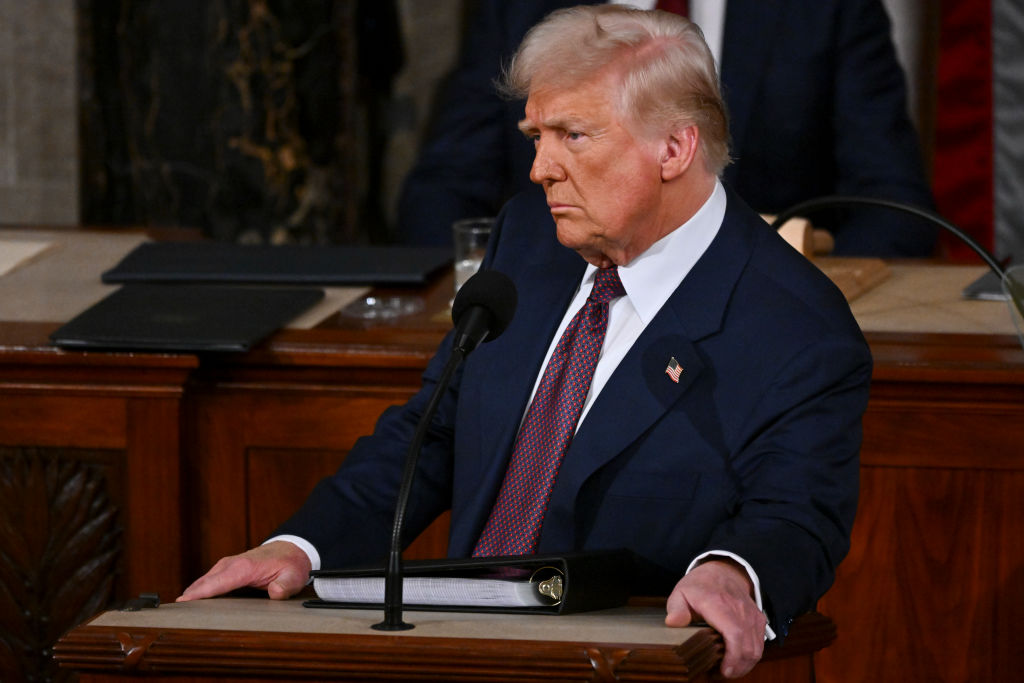UPS and UAW Labor Disputes Rage Over Wage Fights: Kiplinger Economic Forecasts
As labor disputes continue, UPS has narrowly averted a Teamsters strike and United Auto Workers are at a standstill in negotiations.

As negotiations between major unions and employers stall, a potential strike could have far-reaching consequences. To help you understand what is going on and what we expect to happen in the future, our highly-experienced Kiplinger Letter team will keep you abreast of the latest developments and forecasts (Get a free issue of The Kiplinger Letter or subscribe). You'll get all the latest news first by subscribing, but we will publish many (but not all) of the forecasts a few days afterward online. Here’s the latest...
Keep an eye on these labor disputes with big potential ramifications.
First, union United Auto Workers (UAW) is taking a more aggressive approach to contract negotiations with the Big Three automakers under President Shawn Fain than in previous years. Talks began earlier this month with the goal of reaching a deal before the current one with Ford, GM and Chrysler parent Stellantis expires in September.
From just $107.88 $24.99 for Kiplinger Personal Finance
Become a smarter, better informed investor. Subscribe from just $107.88 $24.99, plus get up to 4 Special Issues

Sign up for Kiplinger’s Free Newsletters
Profit and prosper with the best of expert advice on investing, taxes, retirement, personal finance and more - straight to your e-mail.
Profit and prosper with the best of expert advice - straight to your e-mail.
Among the union’s demands: increasing wages, ending tiered structures for wages and benefits and reinstating annual cost-of-living adjustments for workers. More important is how the union aims to achieve them.
Under Fain, UAW, which represents 150,000 hourly workers at the Big Three automakers, has refused to name a single automaker on which to initially focus negotiations. Instead, the union has hinted at taking on Ford, GM and Stellantis simultaneously. UAW also says it’s not afraid of a prolonged fight, with $825 million in its strike fund.
During the last round of bargaining in 2019, a breakdown in talks between automakers and the union resulted in a 40-day strike against GM. The automaker claims the strike cost it $3.6 billion that year.
Meanwhile, the Teamsters and UPS averted a possible strike, for now, when they reached a tentative agreement on July 25. Union members need to vote to approve the new contract. Failure to ratify the tentative agreement, which addresses disputes about wages and benefits for part-time employees, could mean another strike threat looms.
If a strike were to occur, you could expect parcel shipping rates to jump by 10%, as capacity is strained at FedEx and other parcel delivery companies. LTL, or less than truckload, companies should also benefit. They carry smaller freight than traditional truckload companies. Also poised to profit: Intermodal rail, a shift that is already happening as shippers schedule alternatives to UPS.
Absent a strike, shipping rates will continue at their current low level.
This forecast first appeared in The Kiplinger Letter, which has been running since 1923 and is a collection of concise weekly forecasts on business and economic trends, as well as what to expect from Washington, to help you understand what’s coming up to make the most of your investments and your money. Subscribe to The Kiplinger Letter.
Related Content
- Southwest Airlines Bracing for Pilots Strike: Kiplinger Economic Forecasts
- UPS and Teamsters Reach Tentative Agreement on Contract
- Biden Administration Considering Raft of Changes to Labor Rules: Kiplinger Economic Forecasts
Profit and prosper with the best of Kiplinger's advice on investing, taxes, retirement, personal finance and much more. Delivered daily. Enter your email in the box and click Sign Me Up.

Sean Lengell covers Congress and government policy for The Kiplinger Letter. Before joining Kiplinger in January 2017 he served as a congressional reporter for eight years with the Washington Examiner and the Washington Times. He previously covered local news for the Tampa (Fla.) Tribune. A native of northern Illinois who spent much of his youth in St. Petersburg, Fla., he holds a bachelor's degree in English from Marquette University.
-
 CD Maturing Soon? Here's What to Do Next
CD Maturing Soon? Here's What to Do NextThese strategies of what to do when you have a CD maturing soon will have you maximizing returns even with rate cuts.
-
 How to Make 2026 Your Best Year Yet for Retirement Savings
How to Make 2026 Your Best Year Yet for Retirement SavingsMake 2026 the year you stop coasting and start supercharging your retirement savings.
-
 You Saved for Retirement: 4 Pressing FAQs Now
You Saved for Retirement: 4 Pressing FAQs NowSaving for retirement is just one step. Now, you have to figure out how to spend and maintain funds. Here are four frequently asked questions at this stage.
-
 What to Expect from the Global Economy in 2026
What to Expect from the Global Economy in 2026The Kiplinger Letter Economic growth across the globe will be highly uneven, with some major economies accelerating while others hit the brakes.
-
 Shoppers Hit the Brakes on EV Purchases After Tax Credits Expire
Shoppers Hit the Brakes on EV Purchases After Tax Credits ExpireThe Letter Electric cars are here to stay, but they'll have to compete harder to get shoppers interested without the federal tax credit.
-
 The Economy on a Knife's Edge
The Economy on a Knife's EdgeThe Letter GDP is growing, but employers have all but stopped hiring as they watch how the trade war plays out.
-
 Banks Are Sounding the Alarm About Stablecoins
Banks Are Sounding the Alarm About StablecoinsThe Kiplinger Letter The banking industry says stablecoins could have a negative impact on lending.
-
 Japan Enters a New Era of Risk and Reform
Japan Enters a New Era of Risk and ReformThe Kiplinger Letter Japan has entered a pivotal moment in its economic history, undertaking ambitious policy and structural reforms to escape from decades of stagnation.
-
 After Years of Stagnant Growth, Hope Emerges for EU Economy
After Years of Stagnant Growth, Hope Emerges for EU EconomyThe Kiplinger Letter Can a German fiscal push outweigh French political peril?
-
 Trump's Economic Intervention
Trump's Economic InterventionThe Kiplinger Letter What to Make of Washington's Increasingly Hands-On Approach to Big Business
-
 AI Start-ups Are Rolling in Cash
AI Start-ups Are Rolling in CashThe Kiplinger Letter Investors are plowing record sums of money into artificial intelligence start-ups. Even as sales grow swiftly, losses are piling up for AI firms.

